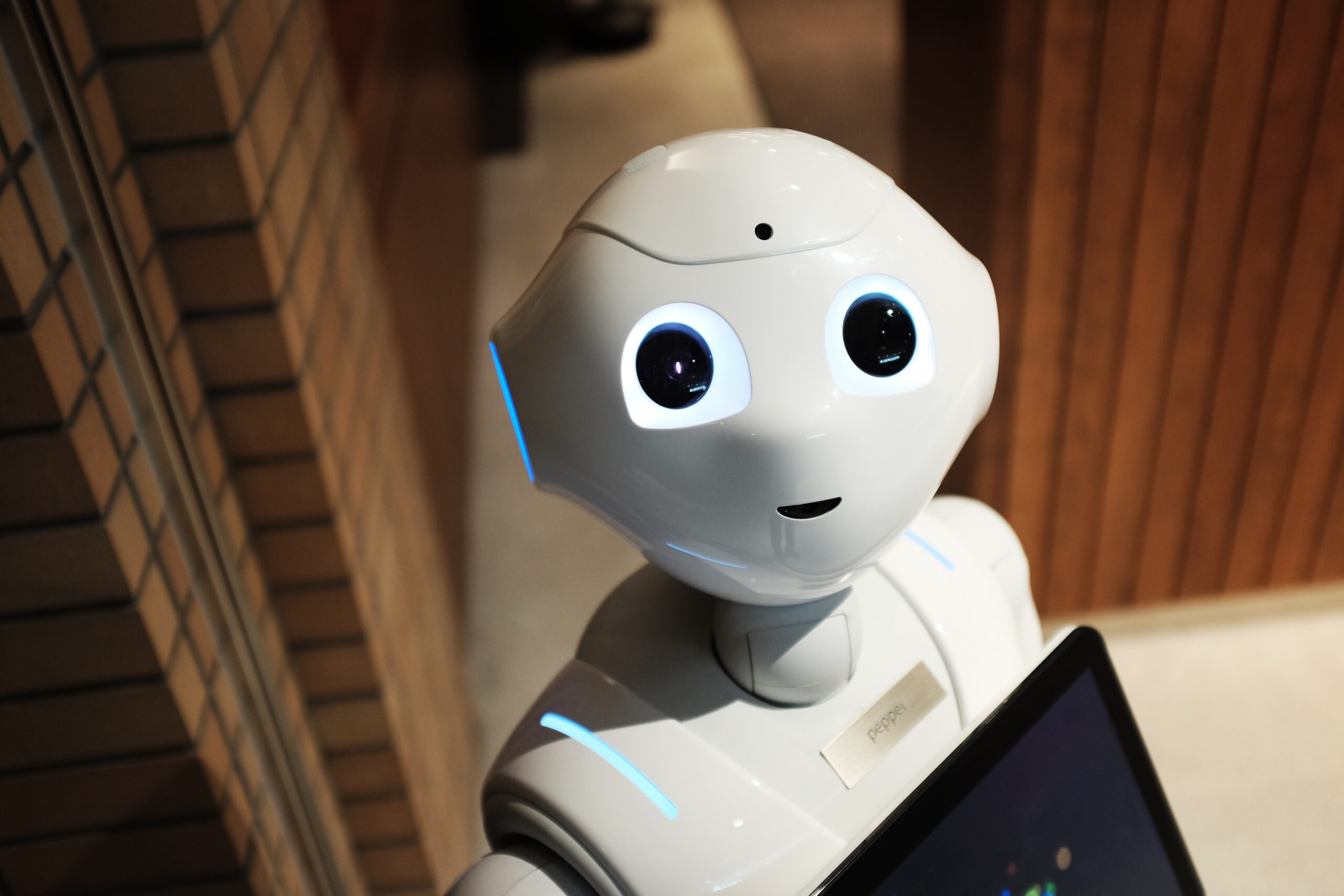Imagine a world where our potential as humans is limitless, where technology seamlessly integrates with our bodies and enhances our capabilities. In this captivating article, we explore the reality of augmented humans and how technology is expanding our abilities in ways that were once purely fantastical. From bionic limbs that restore mobility to those who have lost it, to brain-computer interfaces that unlock new levels of communication, this glimpse into the future will leave you in awe of the incredible advancements that await us.

Understanding Augmented Humans
Definition of augmented humans
Augmented humans refer to individuals who have undergone technological enhancements to expand their physical, cognitive, and perceptual abilities beyond the limitations of the human body and mind. Human augmentation is the process of integrating technology into the human experience to enhance and improve various aspects of our daily lives.
History and evolution of human augmentation
The concept of human augmentation dates back to ancient times when humans used tools and weapons to enhance their physical abilities. Over the centuries, advancements in technology have allowed for increasingly complex and sophisticated forms of augmentation. From the invention of eyeglasses in the 13th century to the development of the internet in the 20th century, humans have been augmenting themselves in various ways. Today, with the rapid advancement of technology, human augmentation has reached new heights, allowing for unprecedented capabilities.
Technological Advancements Driving Human Augmentation
Important technological innovations
Several technological innovations have paved the way for the development of human augmentation. One crucial innovation is the exponential growth of computing power, enabling more complex simulations, analysis, and communication. Additionally, advancements in materials science have led to the creation of lightweight and durable materials used in prosthetics and exoskeletons. Other significant technological advancements include advancements in robotics, bioengineering, and the internet of things.
Role of Artificial Intelligence and Machine Learning
artificial intelligence (AI) and Machine Learning (ML) play a vital role in human augmentation. AI algorithms enable machines to process vast amounts of data, learn from it, and make informed decisions. ML algorithms allow machines to adapt and improve their performance based on experience. These technologies are crucial for developing intelligent prosthetics, brain-computer interfaces, and other augmentative devices.
Importance of Bioengineering in human augmentation
Bioengineering has revolutionized human augmentation by providing innovative solutions to enhance human capabilities. This field combines biology and engineering to develop technologies like neural implants, genetic modifications, and anti-aging technologies. These advancements offer opportunities to improve the quality of life and extend human potential.
Different Spheres of Human Augmentation
Cognitive Enhancement
cognitive enhancement focuses on improving mental processes, such as memory, attention, and problem-solving skills. It involves various methods and technologies that augment human cognitive abilities.
Physical Enhancement
Physical enhancement aims to enhance human strength, endurance, and overall physical performance. It encompasses technologies like prostheses, exoskeletons, and genetic modifications designed to improve human physical capabilities.
Perceptual Enhancement
Perceptual enhancement focuses on expanding and enhancing human senses and perception. Augmented reality, virtual reality, and sensory substitution devices are key technologies used for perceptual enhancement.
Cognitive Enhancements
Brain-Computer Interfaces
Brain-Computer Interfaces (BCIs) are technologies that establish a direct communication pathway between the brain and an external device. BCIs enable individuals to control devices or interact with computers using their thoughts alone. Such interfaces have profound implications for individuals with paralysis, allowing them to regain independence and control.
Nootropics and smart drugs
Nootropics and smart drugs are substances or preparations that enhance cognitive functions. These substances act on the brain’s neurotransmitters, improving focus, memory, and overall mental performance. While they have gained popularity, their long-term effects and potential risks need further research.
Neural implants and brain stimulation devices
Neural implants and brain stimulation devices are used to treat neurological disorders and enhance cognitive abilities. These devices are implanted or externally applied to stimulate specific areas of the brain, modulating neural activity. They hold promise for improving memory, mood, and cognitive functions in individuals with brain injuries or neurodegenerative diseases.

Physical Enhancements
Prostheses and exoskeletons
Prostheses and exoskeletons are devices designed to enhance mobility and physical capabilities for individuals with limb loss or impairment. Prostheses replace missing limbs or body parts, while exoskeletons provide external support and augment strength and endurance. These technologies improve the daily lives and independence of individuals with physical disabilities.
Genetic modifications
Genetic modifications offer the potential to enhance physiological traits and minimize the risk of genetic diseases. Technologies like gene editing and gene therapy enable targeted modifications in the DNA sequence, allowing for precise changes in an individual’s genetic makeup. While still a developing field, genetic enhancements hold promise for improving human health and performance.
Anti-aging technologies
Anti-aging technologies aim to slow down or reverse the aging process, allowing individuals to live healthier and longer lives. Strategies include regenerative medicine, senolytics, and interventions targeting cellular aging. While the quest for immortality remains elusive, these technologies show promise in increasing health span and improving quality of life in old age.
Perceptual Enhancements
Augmented reality and virtual reality
Augmented reality (AR) and virtual reality (VR) technologies enhance our perception of reality by overlaying computer-generated information or creating immersive virtual environments. AR enhances real-world experiences with digital information, while VR creates entirely simulated environments. These technologies have applications in gaming, education, training, and entertainment.
Sensory substitution devices
Sensory substitution devices aim to replace or compensate for missing sensory capabilities by translating sensory input into alternative output that can be perceived by the remaining senses. For instance, a visual-to-auditory device can convert visual information into sound, allowing blind individuals to “see” with their ears. These devices offer groundbreaking opportunities for individuals with sensory impairments.
Biohacking and self-experimentation
Biohacking involves individuals modifying their bodies or biology through self-experimentation and the integration of technology. This can include practices like implanting magnets under the skin to enhance sensory perception or using wearable devices to track and optimize personal health. Biohacking allows individuals to take control of their own biology and explore the limits of human augmentation.

Benefits of Human Augmentation
Increasing productivity and efficiency
By enhancing cognitive and physical abilities, human augmentation can significantly increase productivity and efficiency in various domains. Improved mental focus, memory, and problem-solving skills can lead to more efficient decision-making and task completion. Physical enhancements can enhance strength and endurance, enabling individuals to perform physically demanding tasks with ease.
Improving health and longevity
Human augmentation technologies hold great potential for improving overall health and extending human lifespan. Genetic modifications can help prevent genetic diseases and enhance resistance to common ailments. Regenerative medicine and anti-aging interventions can enable people to live healthier, more fulfilling lives for longer periods.
Enhanced communication and exploration capabilities
Augmented humans can benefit from improved communication and exploration capabilities. Technologies like brain-computer interfaces and neural implants have the potential to revolutionize communication for individuals with disabilities, allowing them to express themselves and interact with the world more easily. Perceptual enhancements like AR and VR enable immersive experiences and virtual travel, expanding our exploration abilities.
Ethical and Social Implications
Privacy and security issues
Human augmentation raises concerns about privacy and security. With ever-increasing connectivity between devices and humans, there is a risk of unauthorized access to personal information or misuse of augmentative technologies. Safeguarding individuals’ privacy and ensuring secure use of these technologies is paramount.
Ethical concerns
ethical considerations arise when discussing human augmentation. Questions regarding the equitable distribution of technologies, potential socioeconomic divides, and the enhancement of certain capabilities over others need to be addressed. Additionally, potential unintended consequences, such as unintended harm or loss of human dignity, must be considered.
Implications for identity and human nature
Human augmentation challenges our understanding of identity and human nature. As we augment ourselves with technology, questions arise about what it means to be human, the boundaries between humans and machines, and the potential loss of authenticity and natural abilities. Exploring these philosophical and existential questions is crucial for understanding the impact of human augmentation on our sense of self.

Legal and Regulatory Challenges
Current legal landscape
The legal landscape surrounding human augmentation is still evolving. Existing legislation may be inadequate in addressing the ethical and societal implications of emerging technologies. While some countries have started addressing certain aspects, such as the use of gene editing or the regulation of medical devices, comprehensive legal frameworks are needed to ensure the responsible development and use of human augmentation technologies.
Future legal and regulatory considerations
As human augmentation technologies continue to advance, it will be crucial to establish comprehensive legal and regulatory frameworks to address the multifaceted challenges they present. These frameworks should consider aspects such as safety, privacy, ethics, equitable access, and responsible use. Collaborative international efforts will be necessary to establish consistent guidelines and standards.
Role of international cooperation
Given the global nature of human augmentation technologies, international cooperation and coordination are essential. Collaborative efforts can help establish common standards, guidelines, and regulations to ensure the responsible and ethical use of human augmentation technologies across borders. International cooperation can also foster knowledge sharing and the development of best practices in this rapidly evolving field.
Future of Human Augmentation
Potential developments in technology
The future of human augmentation holds immense potential for transformative advancements. Advancements in AI, nanotechnology, biotechnology, and other fields will likely lead to more sophisticated and personalized augmentation technologies. We can expect the development of even more refined brain-computer interfaces, enhanced genetic modifications, and novel perceptual enhancement technologies.
Implications for society and humanity
The widespread adoption of human augmentation technologies will undoubtedly have significant implications for society and humanity as a whole. These technologies can reshape various aspects of our lives, from healthcare and education to interpersonal relationships and work. Society must grapple with issues of accessibility, equity, and human dignity to navigate the impact of human augmentation thoughtfully.
Challenges and opportunities ahead
While human augmentation offers immense promise, numerous challenges must be overcome. Technical challenges, such as ensuring long-term safety and maximizing compatibility with the human body, are critical. Balancing the power and potential of these technologies with ethical considerations, privacy concerns, and societal impacts will be essential. By addressing these challenges and seizing the opportunities presented by human augmentation, we can shape a future that expands human capabilities while upholding our values and preserving our shared humanity.











